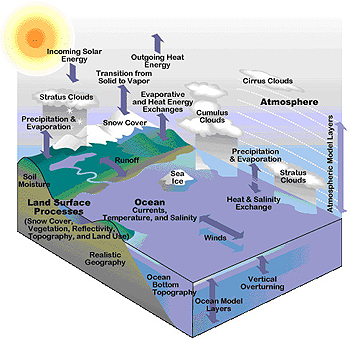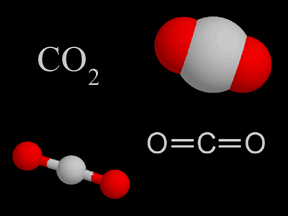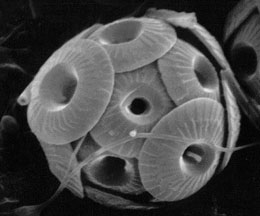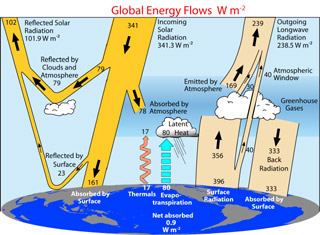Click on image for full size
UCAR
Ocean-Atmosphere Coupling
Scientists who study the atmosphere use computer models to help them out. Some scientists who study the oceans also use computer models of the seas. There are also scientists who study both the atmosphere and the oceans together. Those scientists use a special type of computer model that includes the oceans and the atmosphere. They call that special type of computer model a "coupled model".
Scientists need coupled models because the oceans and the atmosphere are connected. Have you ever studied the water cycle? Heat from the Sun causes water in the ocean to evaporate and go into the air as water vapor. Water vapor forms clouds, and some clouds make rain. Most rain falls on the oceans, returning water to the seas. This is an example of how the atmosphere and oceans are connected.
Other chemicals (besides water) also move between the oceans and the atmosphere. For example, air has carbon dioxide in it. Some of that carbon dioxide gets dissolved into sea water. When it does, it forms carbonic acid. Some types of plankton in the oceans give off chemicals that have sulfur in them. Those sulfur chemicals can end up in the atmosphere.
Heat also moves back and forth between air and water. Water "holds onto" heat better than air. That is why places near oceans have warmer winters (and cooler summers) than places that are further inland. Clouds over the oceans make shade. That can cool off the oceans underneath, since they get less sunlight.
Winds over the ocean push the water along. That makes waves and some kinds of ocean currents. Some of the spray from waves carries salt up into the air.















